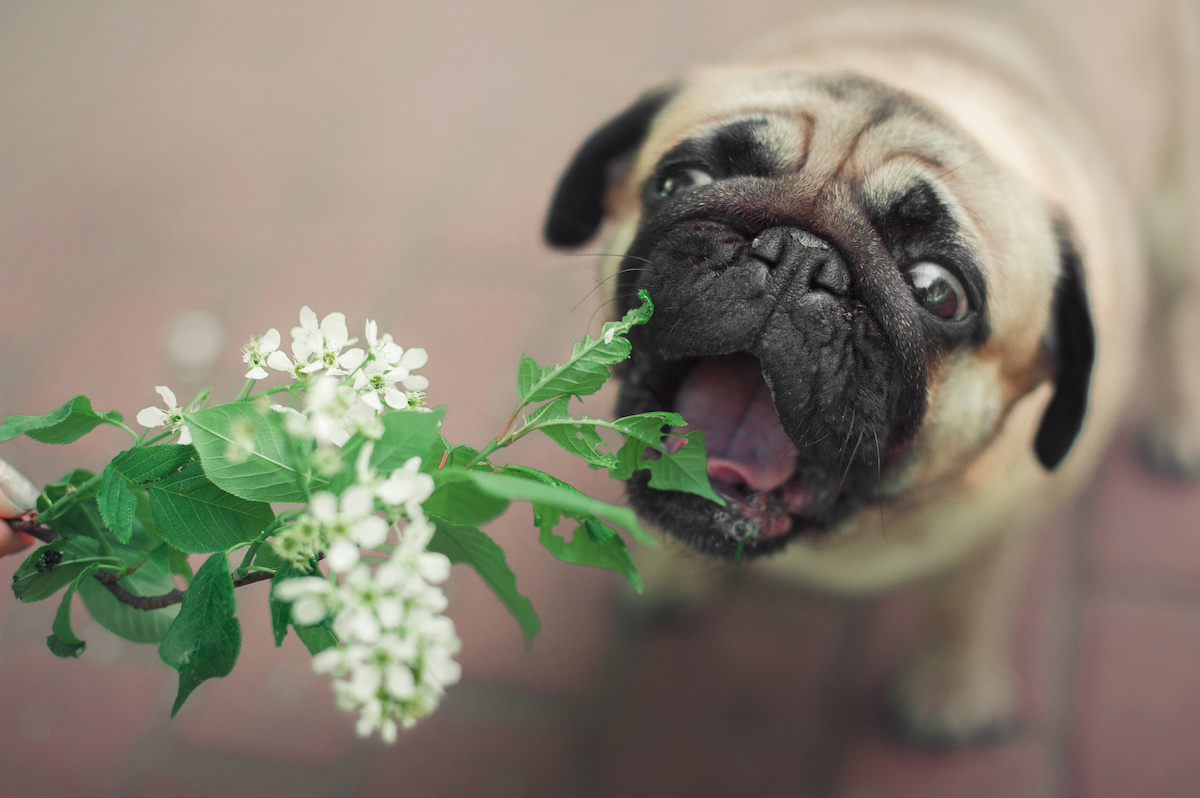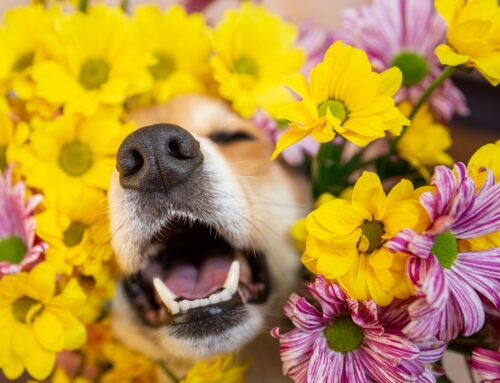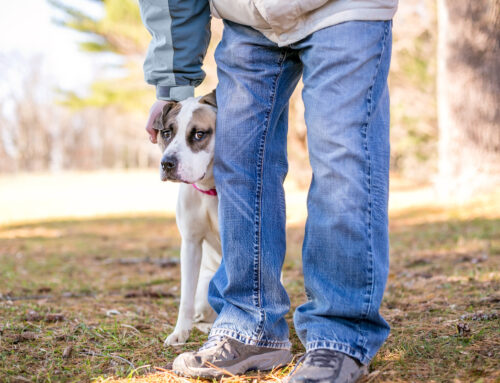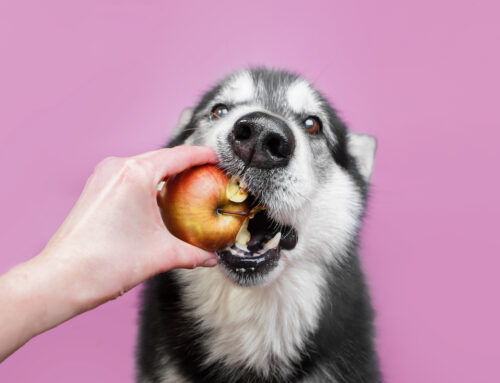Fido may be tempting fate every time you go for a walk. O.K., so that’s a bit melodramatic but it’s at least partially true. There are a huge number of plants that are highly toxic and even deadly to dogs. Some of these plants are present in your local park, your neighbor’s garden, even your own home.
The backyard can be fun and full of surprises for our canine friends to enjoy. But don’t let one of those surprises be a trip to the veterinarian. Keep your yard and garden safe for dogs by avoiding these plants, flowers, shrubs, and trees that could make them very sick.
Follow along to learn about which plants you’ll want to avoid on your next walk.
Ornamental Flowers and Plants
These ornamental palms are popular in warmer climates and every part of it is toxic to dogs. They are also said to be very alluring as some dogs find them quite delicious. Serious side effects including liver failure and possible death can occur, so be very careful.
Make sure to keep dogs clear though, as they can cause weakness, gastrointestinal problems, drowsiness, dilated pupils, slow heart rate, and confusion. We rub it on our skin and some of us even drink the juice, but aloe is something your dog needs to avoid. Saponins in this succulent can cause vomiting, diarrhea, lethargy, tremors, and general central nervous system depression.
Tulips
Who doesn’t love tulips? Hopefully, Fido because they’re another poisonous plant for dogs. The usual gastrointestinal problems are accompanied by central nervous system depression and even convulsions and death. Vomiting, diarrhea, skin rash, and drooling may be in your dog’s future if they ingest this common flower. A very common garden flower that can cause extreme oral irritation and excessive inflammation of the mouth, as well as drooling and vomiting.
Another poisonous plant for dogs, this flowering bulb is a very common garden ornamental. Pay particular attention if you grow the bulbs indoors. This lovely summer flower can cause drooling, vomiting, diarrhea, and general lethargy.
Holly
A popular ornamental shrub in some areas, holly is a low toxicity plant but your dog may experience vomiting and diarrhea if they eat it.
Baby’s Breath
You know it from virtually every bouquet you’ve ever received. Baby’s Breath, the small flower that accompanies floral arrangements can cause vomiting and diarrhea. Very common, very pleasant to look at, very toxic to dogs.
Milkweed
Milkweed will induce the usual vomiting and diarrhea, but your dog may also experience difficulty breathing, rapid and weak pulse, dilated pupils, and even kidney or liver failure and death.
If ingested your dog may experience drooling, vomiting, diarrhea, extreme thirst, loss of appetite, and abdominal pain. Potentially fatal in severe cases, which may present as muscle twitching, tremors, seizures, and even coma. These common flowering shrubs are poisonous plants for dogs and produce serious gastrointestinal issues. They can additionally cause weakness, discoordination, and a weak heart rate.
Chamomile
A lovely herb that is often used in teas and aromatherapy for soothing and calming nerves, the chamomile plant is toxic to dogs. While chamomile is safe in products for dogs, you want to avoid your dog’s contact with the actual plant. Contact dermatitis, vomiting, diarrhea, anorexia, allergic reactions, bleeding tendencies (long-term use).
Alliums
Garlic
A member of the Allium family, garlic is delicious but can be mild to moderately dangerous for dogs. While they can tolerate low doses (as you’ll find some flavoring in pet treats), it is best to avoid these plentiful herbs whenever possible. Drooling, nausea, oral irritation, vomiting, diarrhea, lethargy, abdominal pain, elevated heart rate and respiratory rate, weakness, exercise intolerance, collapse, pale gums.
Keep under close watch, as garlic is about 5 times as toxic as onions. Drooling, nausea, oral irritation, vomiting, diarrhea, lethargy, abdominal pain, elevated heart rate and respiratory rate, weakness, exercise intolerance, collapse, pale gums.
Leeks
Another, slightly less popular member of the Allium family, leeks make a delicious addition to soups and many other dishes. Like other members of the onion family, they can cause some very uncomfortable symptoms for dogs. Drooling, nausea, oral irritation, vomiting, diarrhea, lethargy, abdominal pain, elevated heart rate and respiratory rate, weakness, exercise intolerance, collapse, pale gums.
Dried Hops
With home-brewing on the rise, you may need to watch out for hops growing in backyards. The effects can be quite severe, with dried hops being the most toxic form. Keep any home-brewing materials and leftovers safely contained – hops can be hazardous whether fresh, dried or cooked (spent hops). panting, high body temperature, seizures, death.
Cannabis
Cannabis genus With marijuana legalization a hot topic, and the prevalence of medical use, you should take precautions that your dog does not come across the live marijuana plant or dried cannabis in any form.
Get to Your Vet Right Away
If you think your dog may have ingested any plants and is exhibiting symptoms you want to get to the vet right away. While most of these plants cause mild discomfort, some can have cumulative effects.
Looking for a new vet? Learn more about our practice here.






